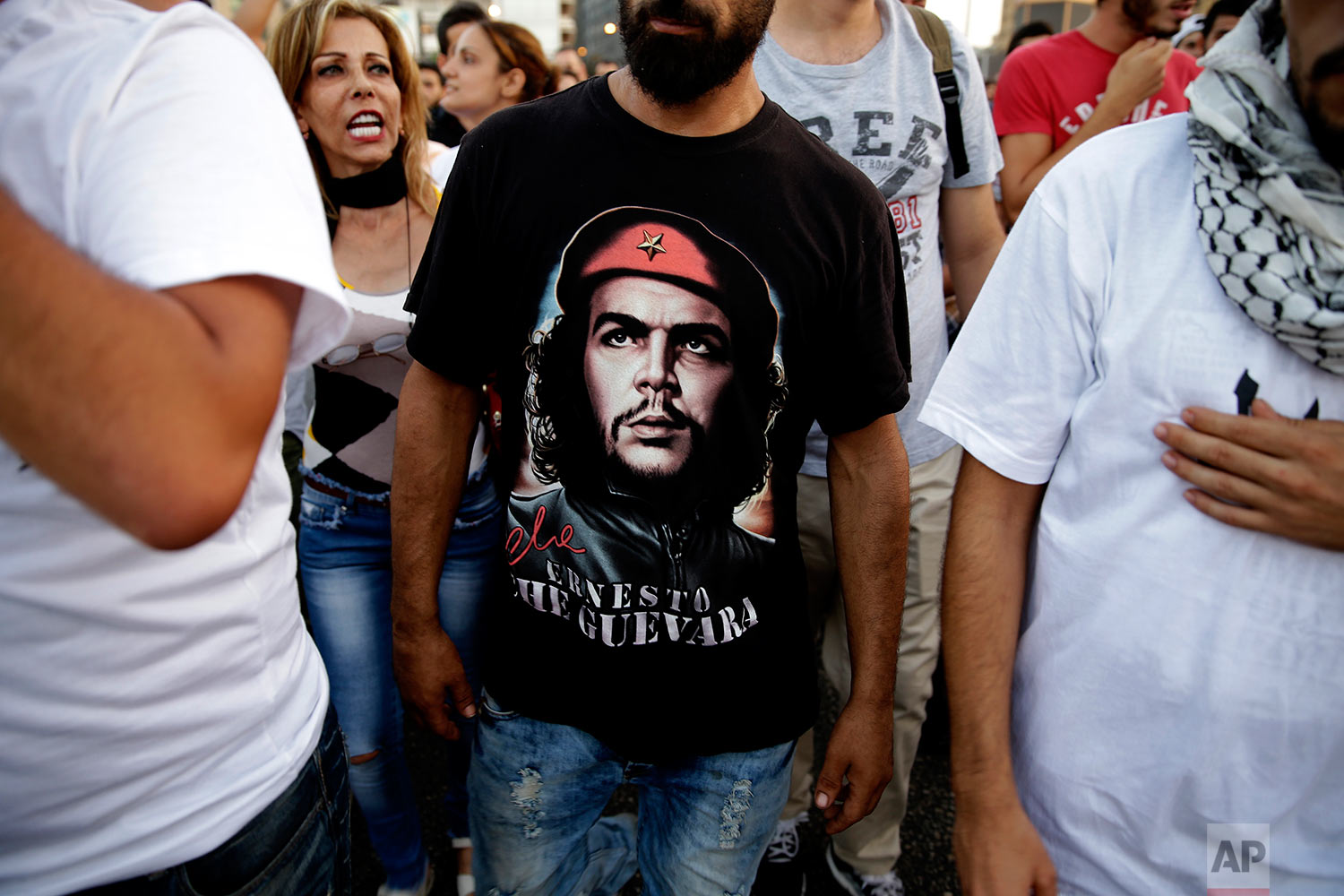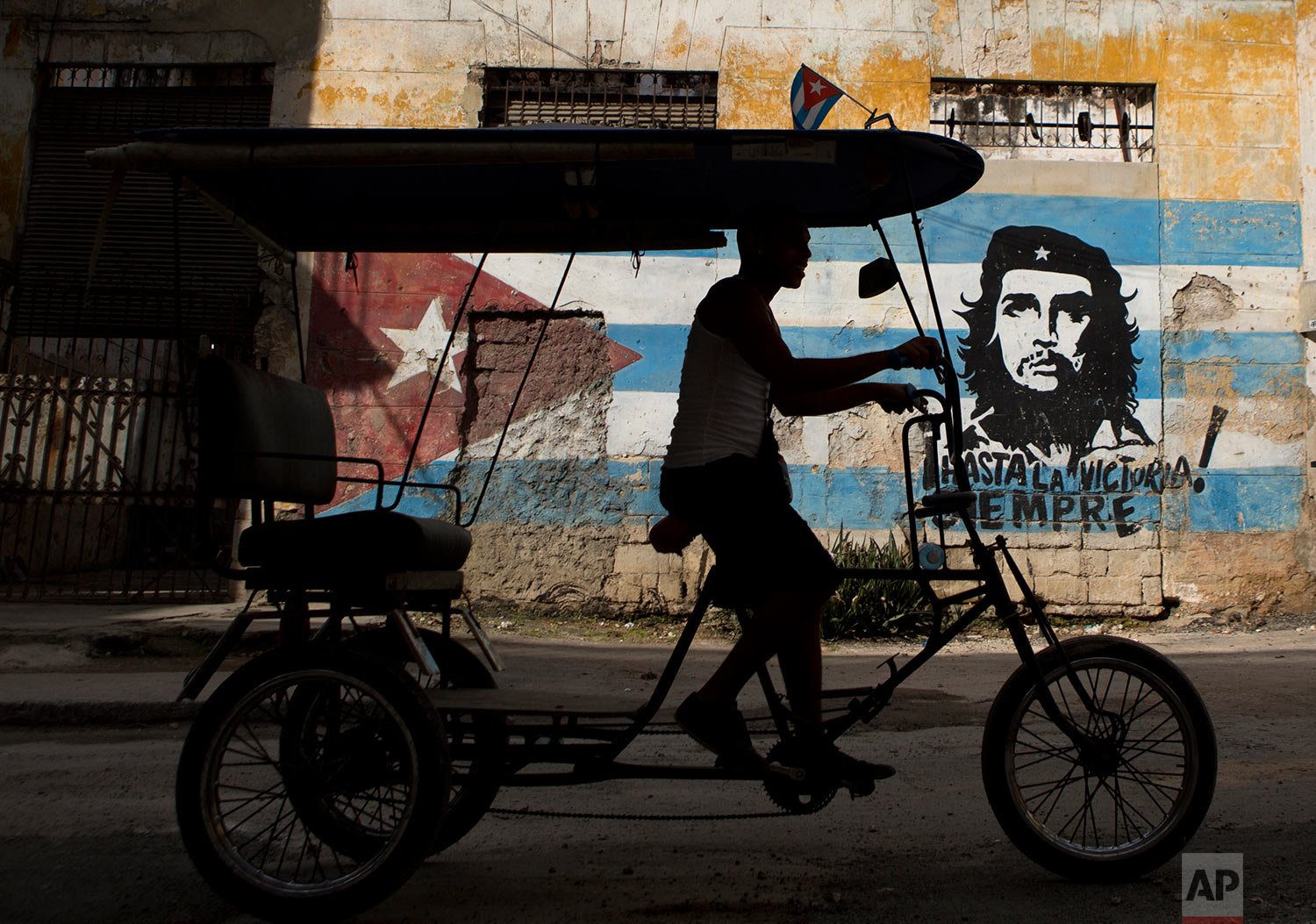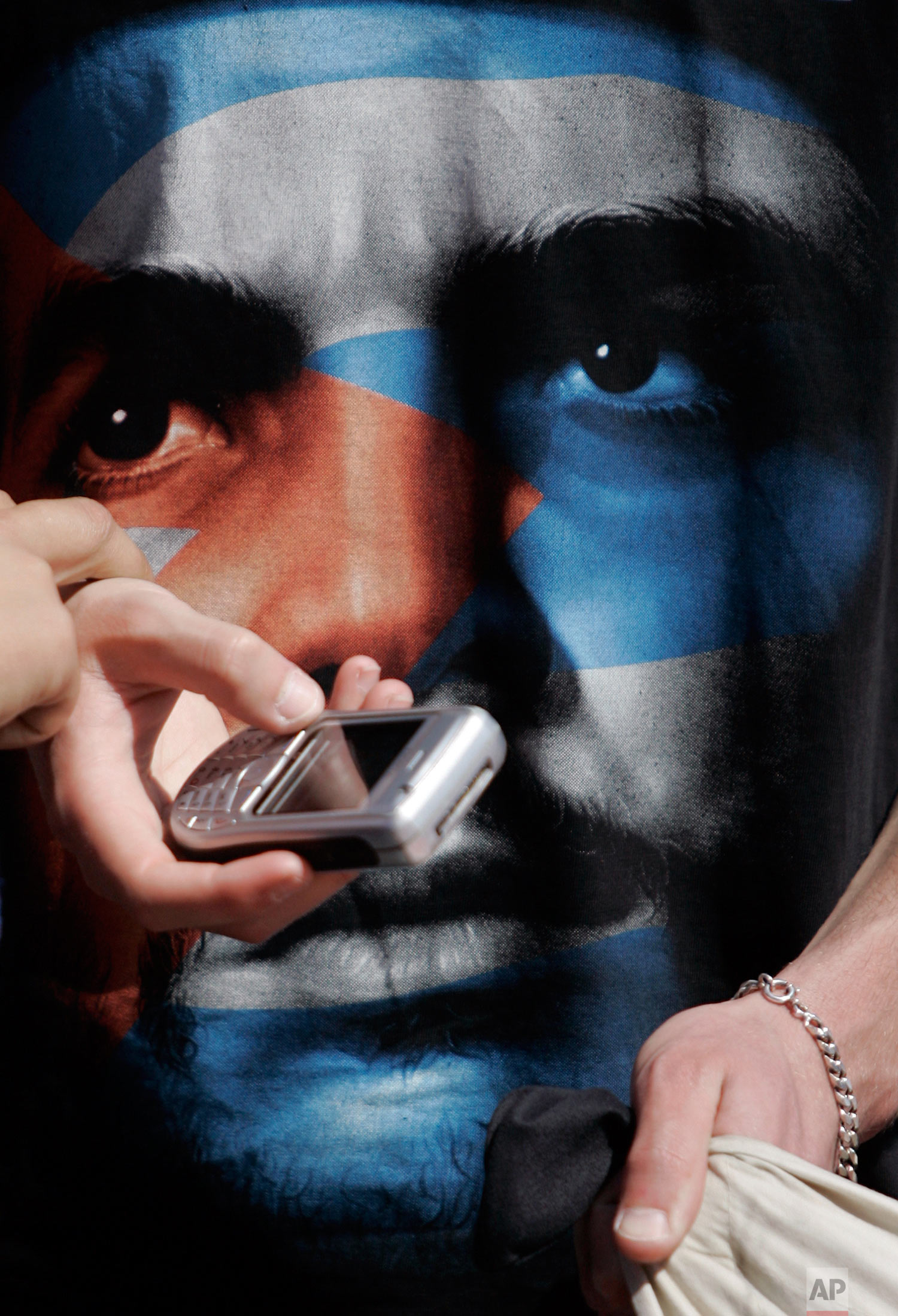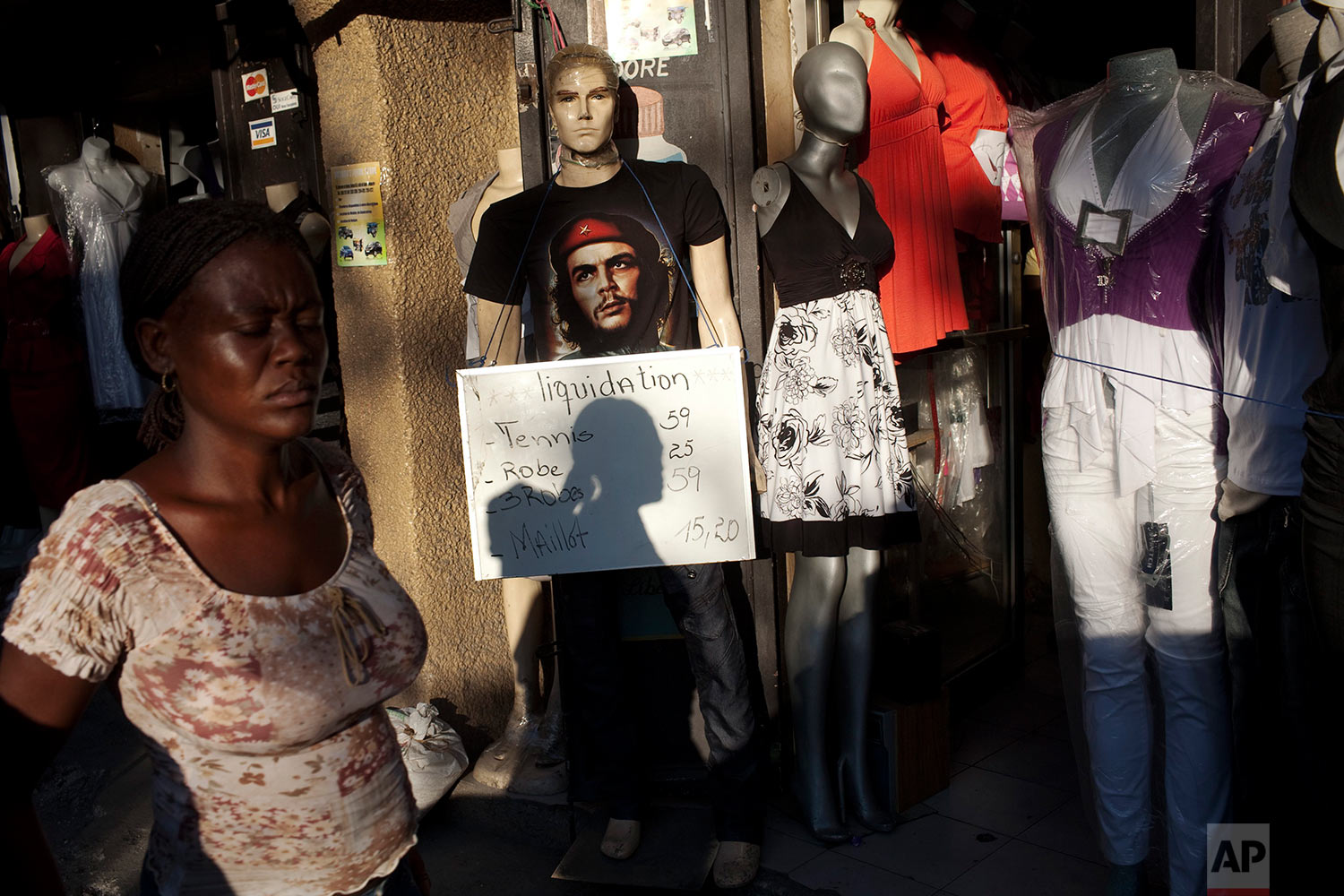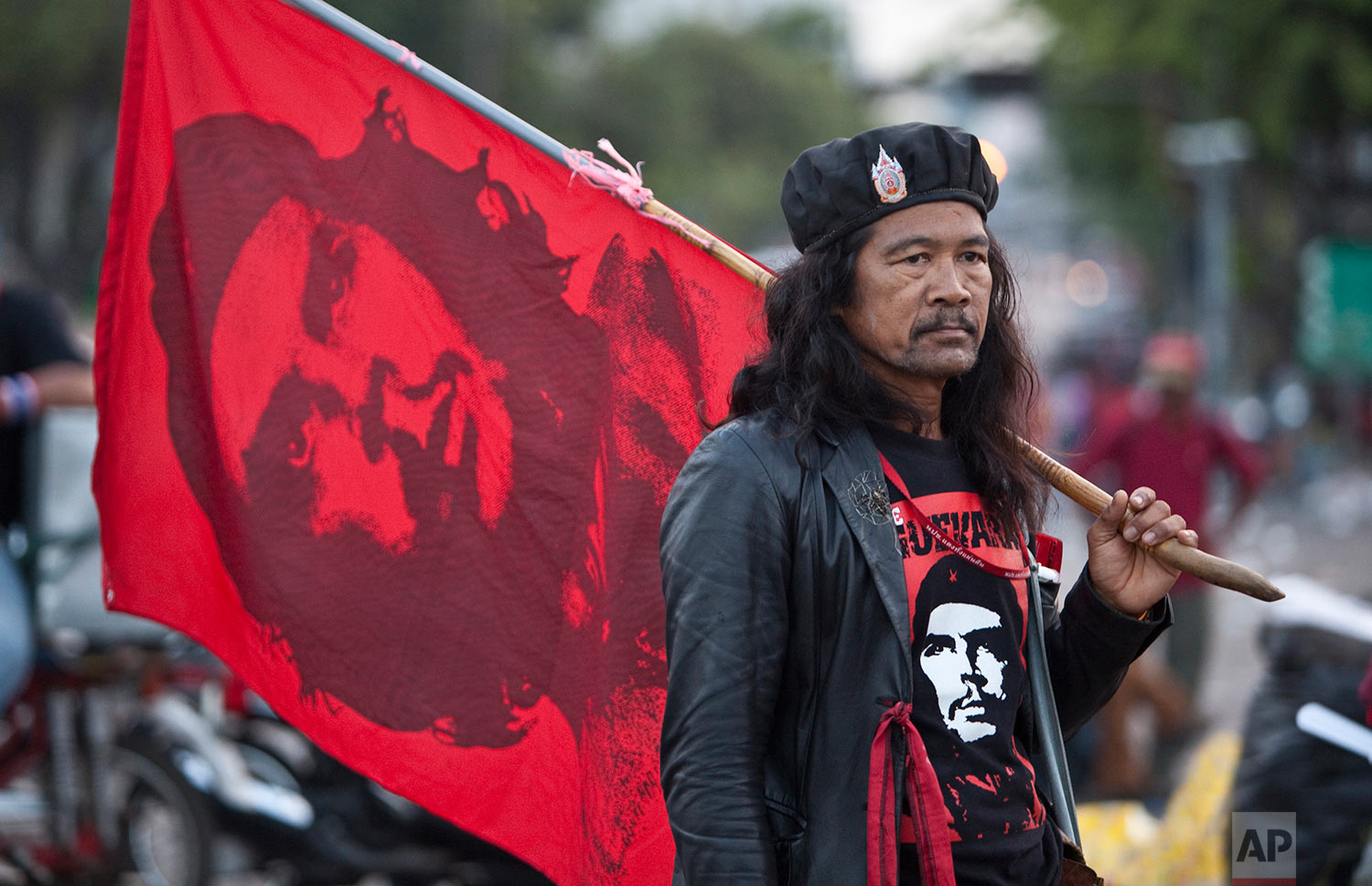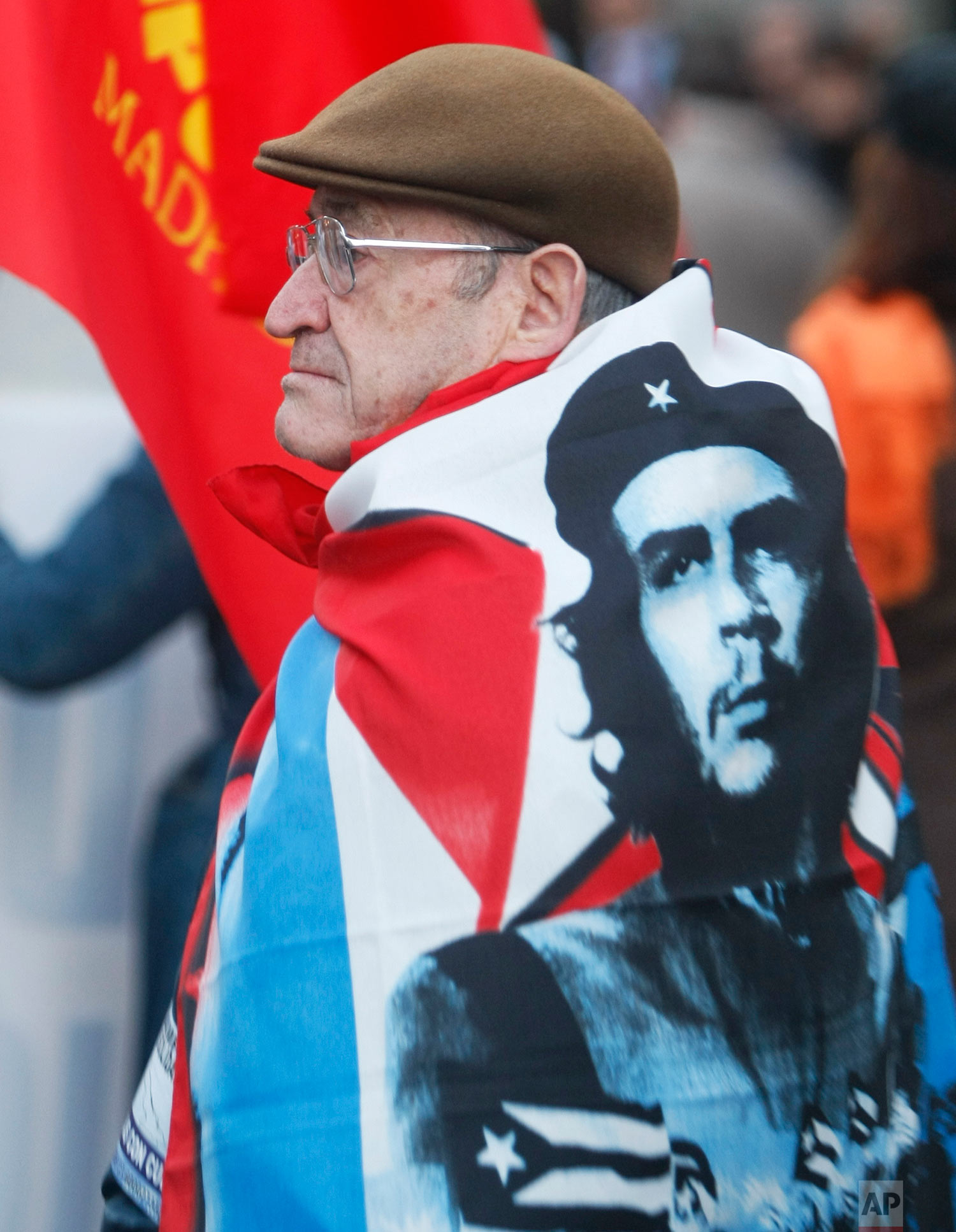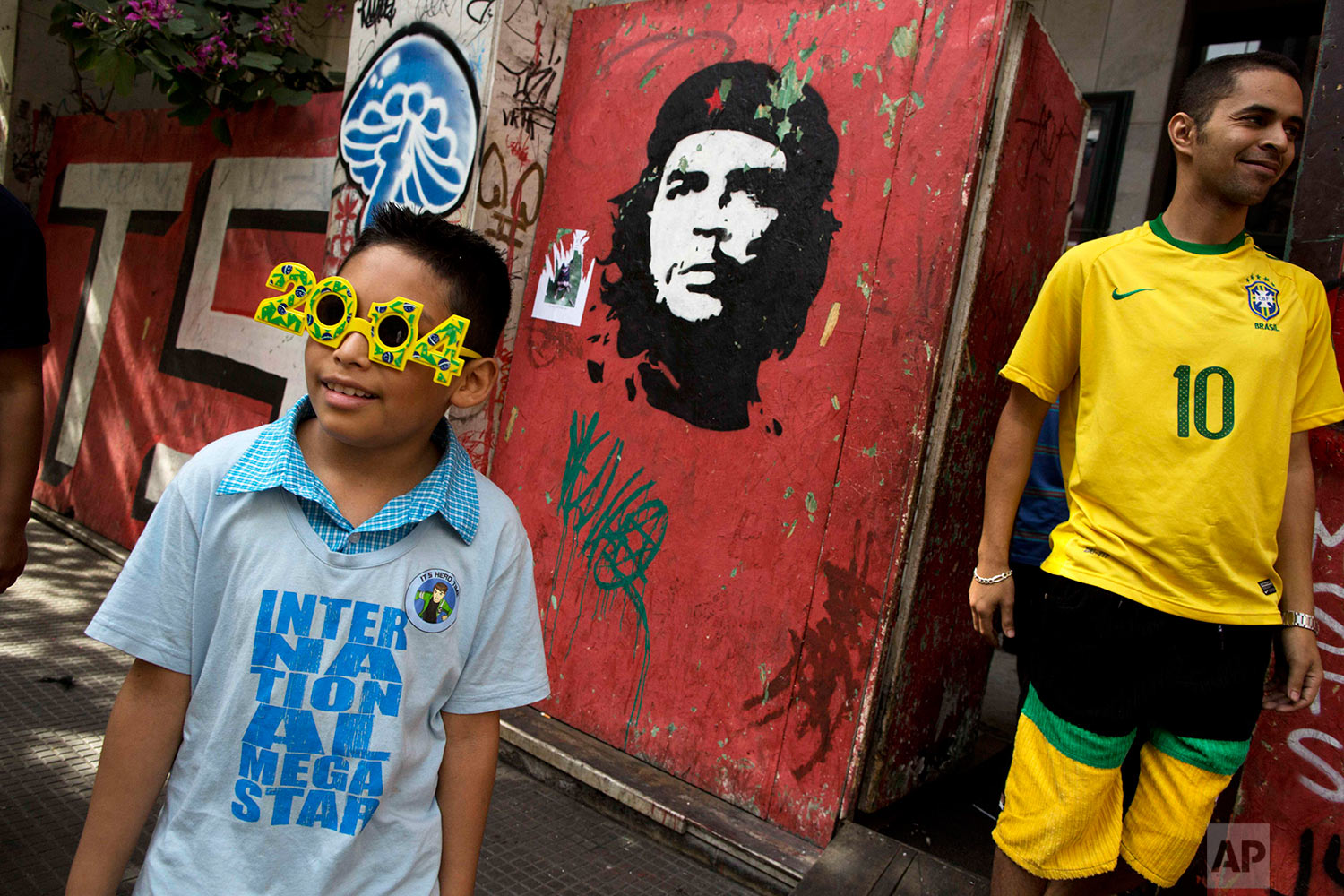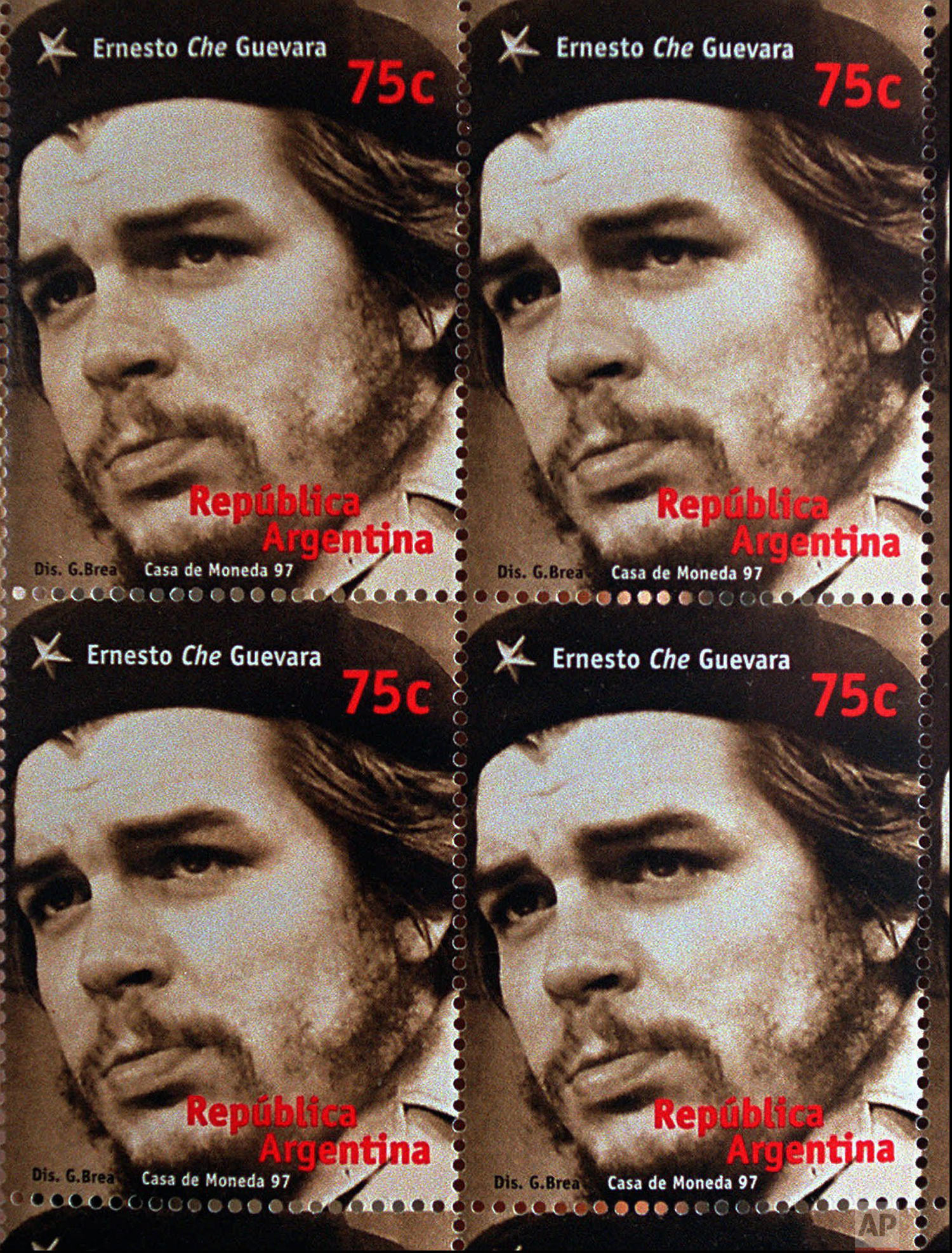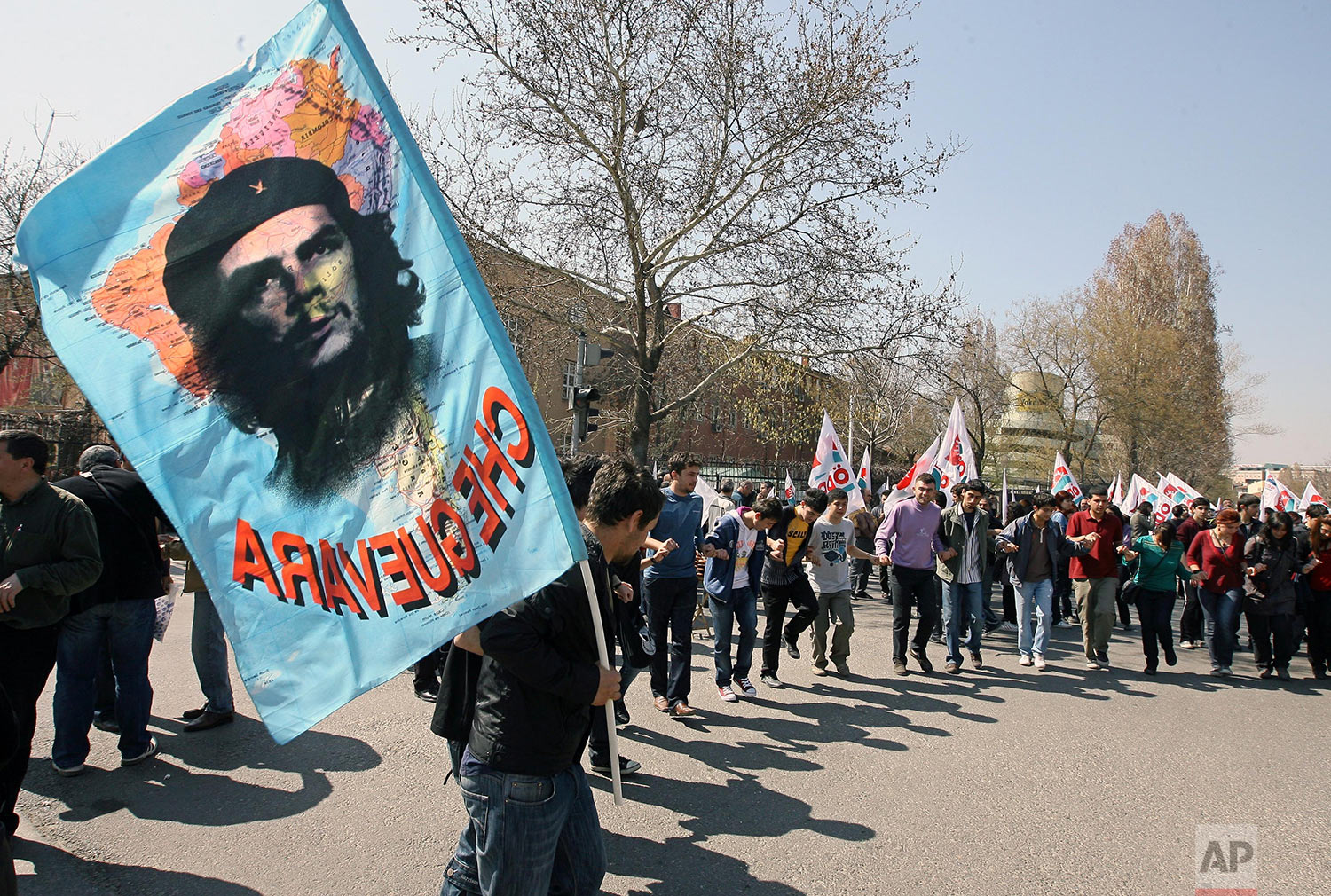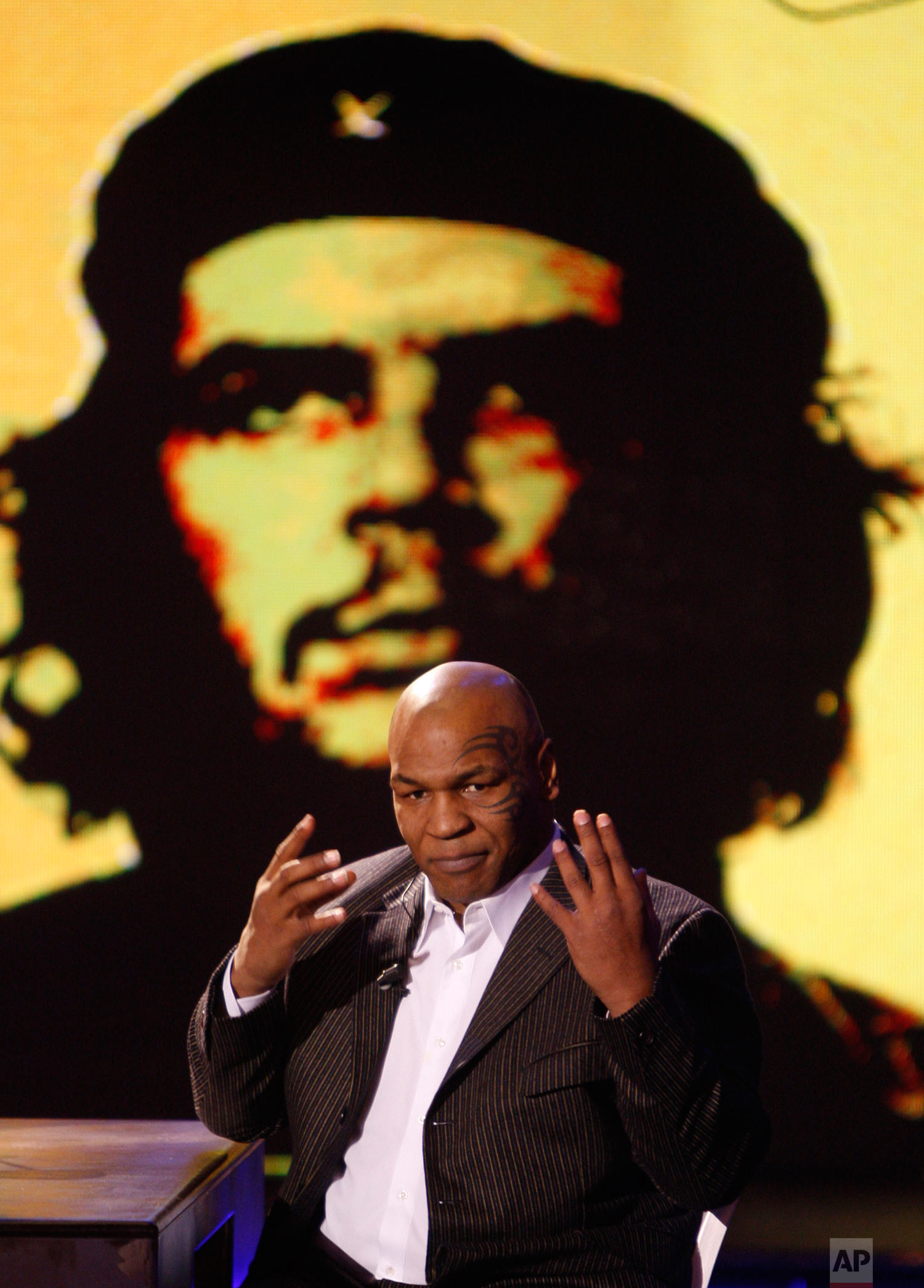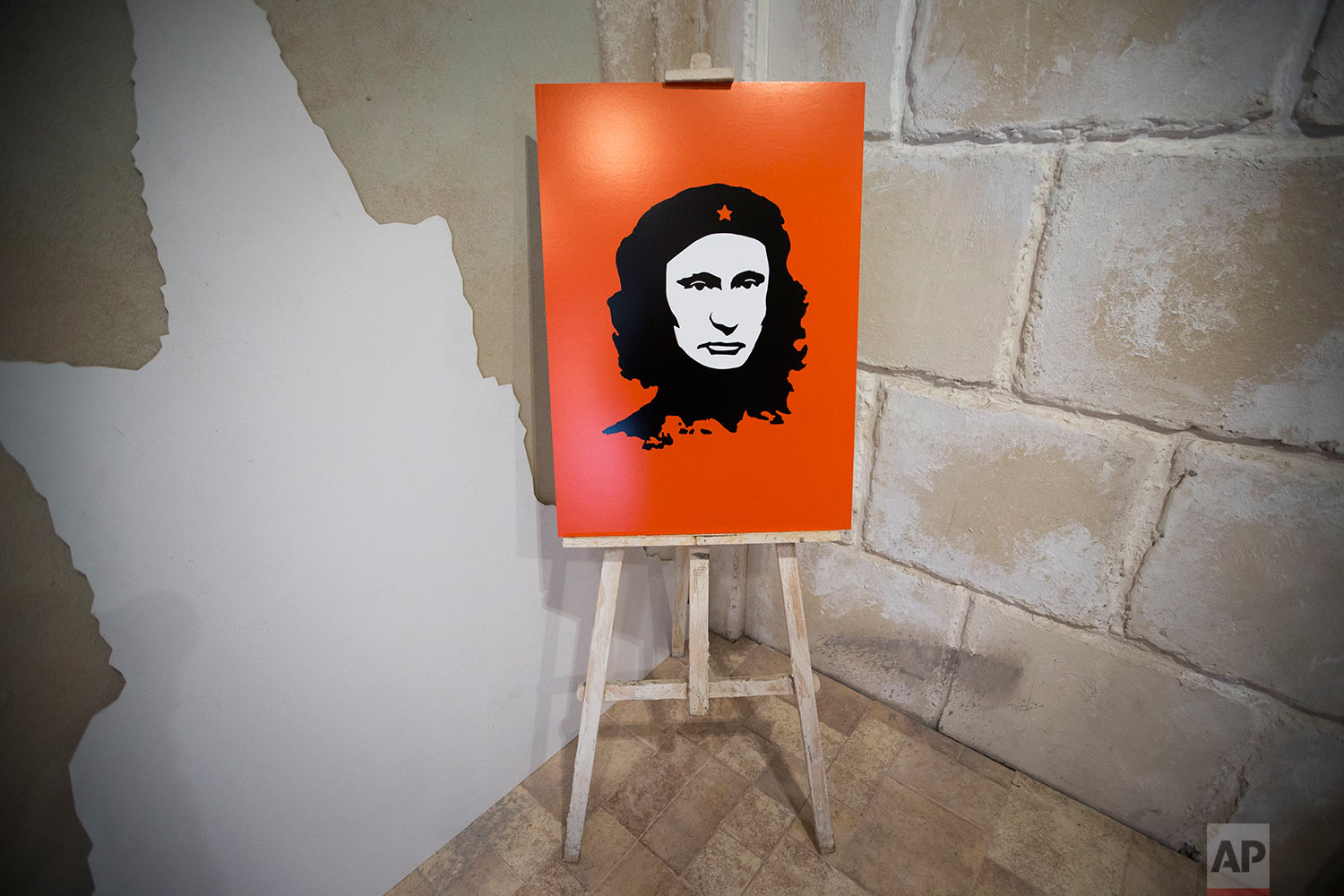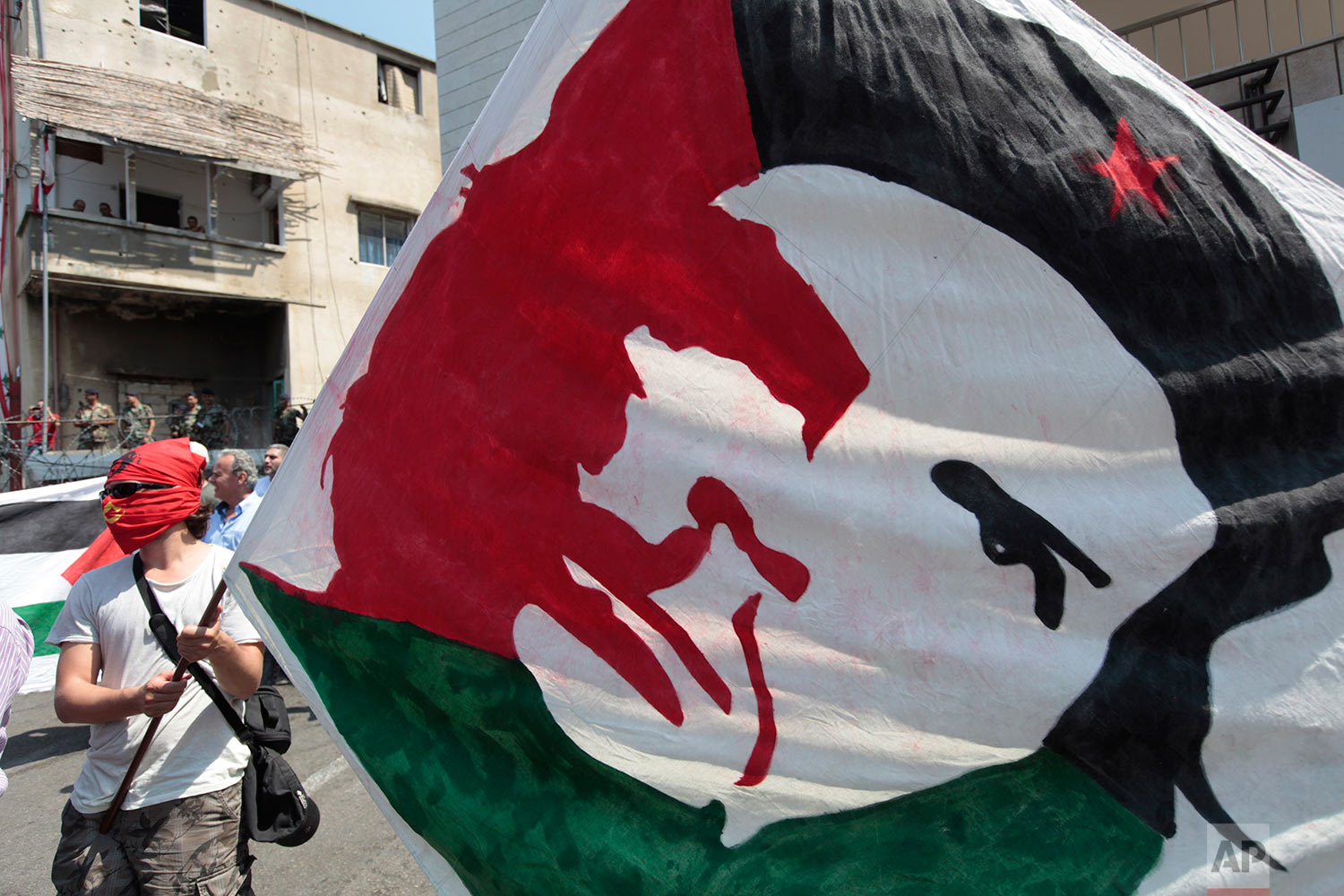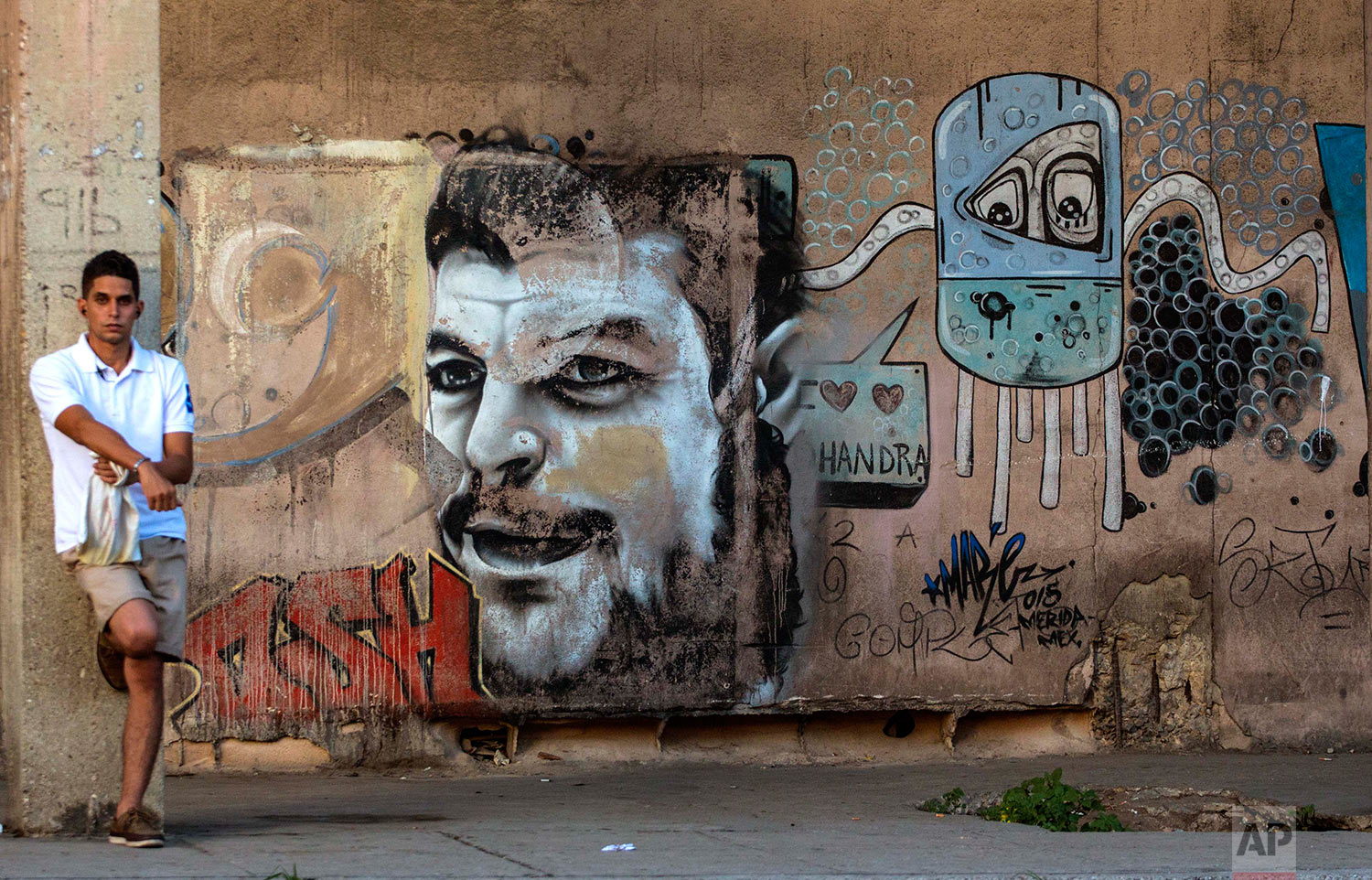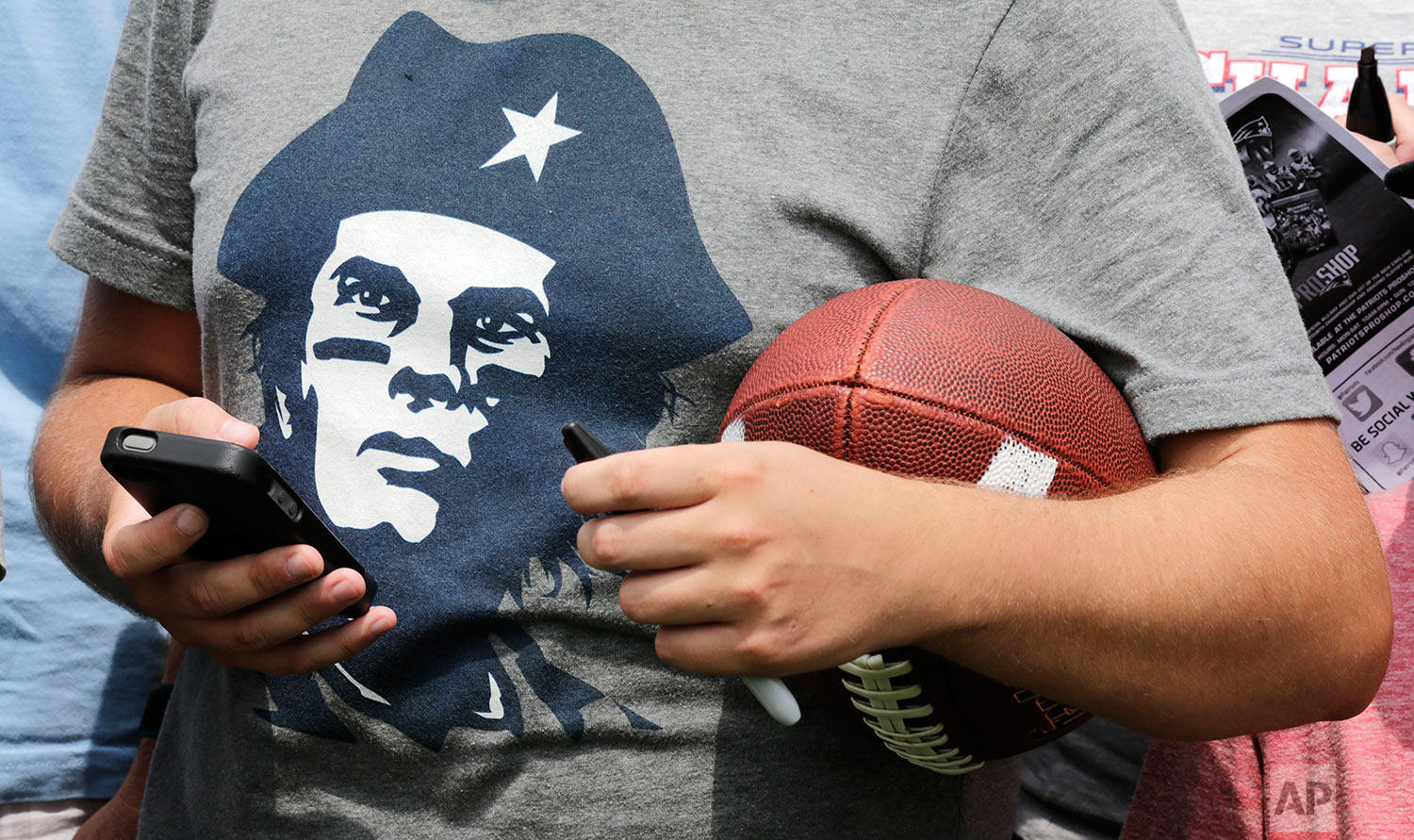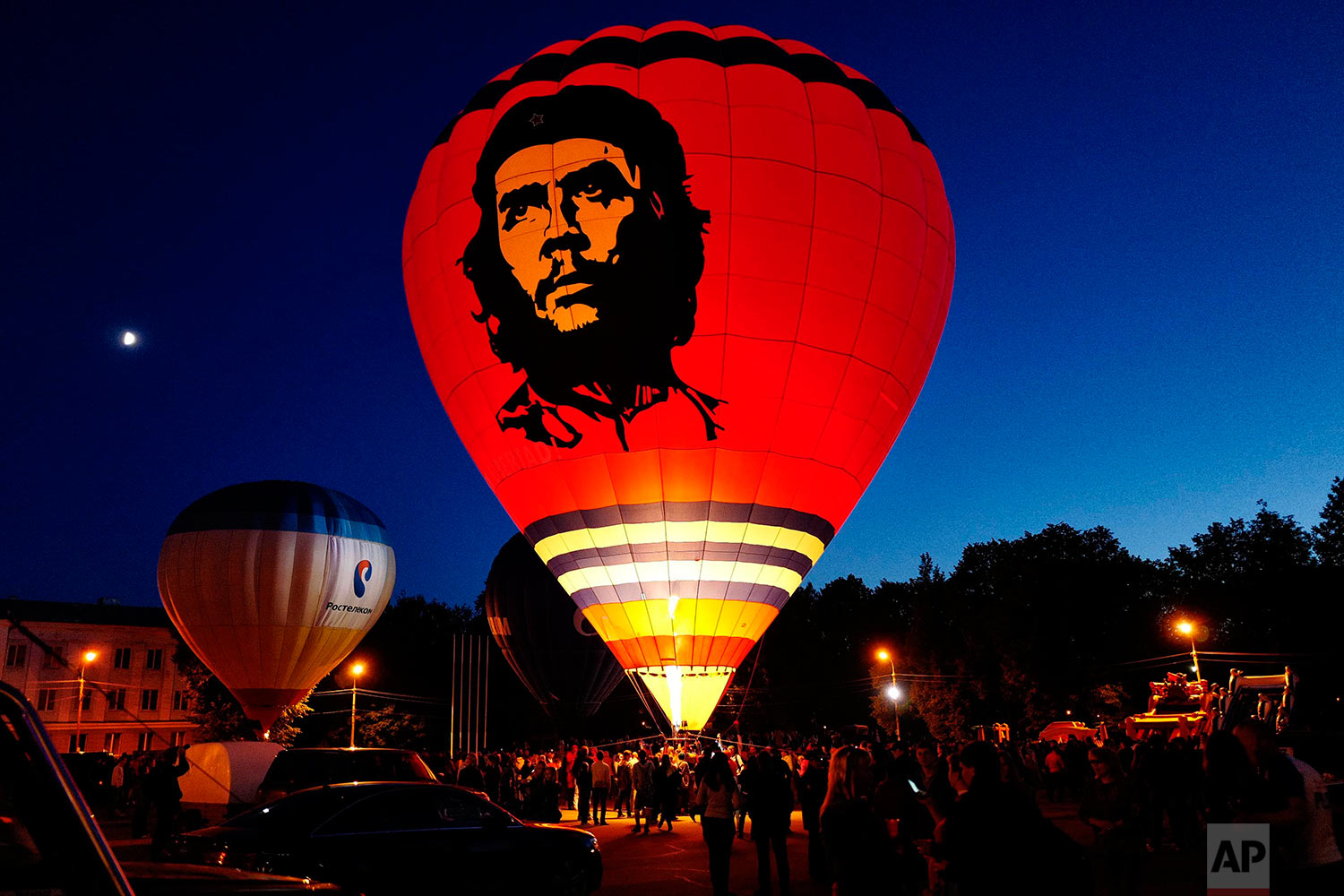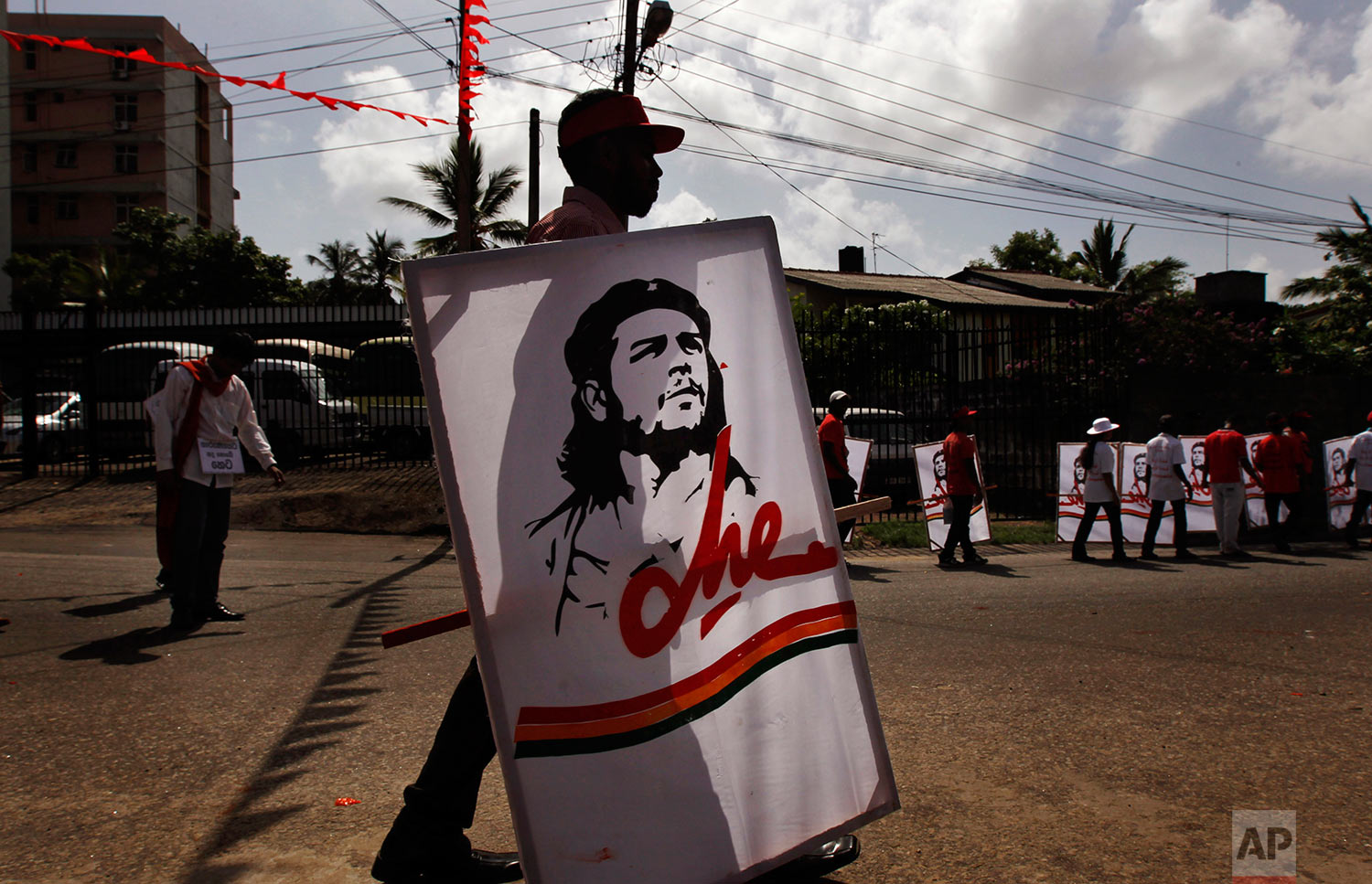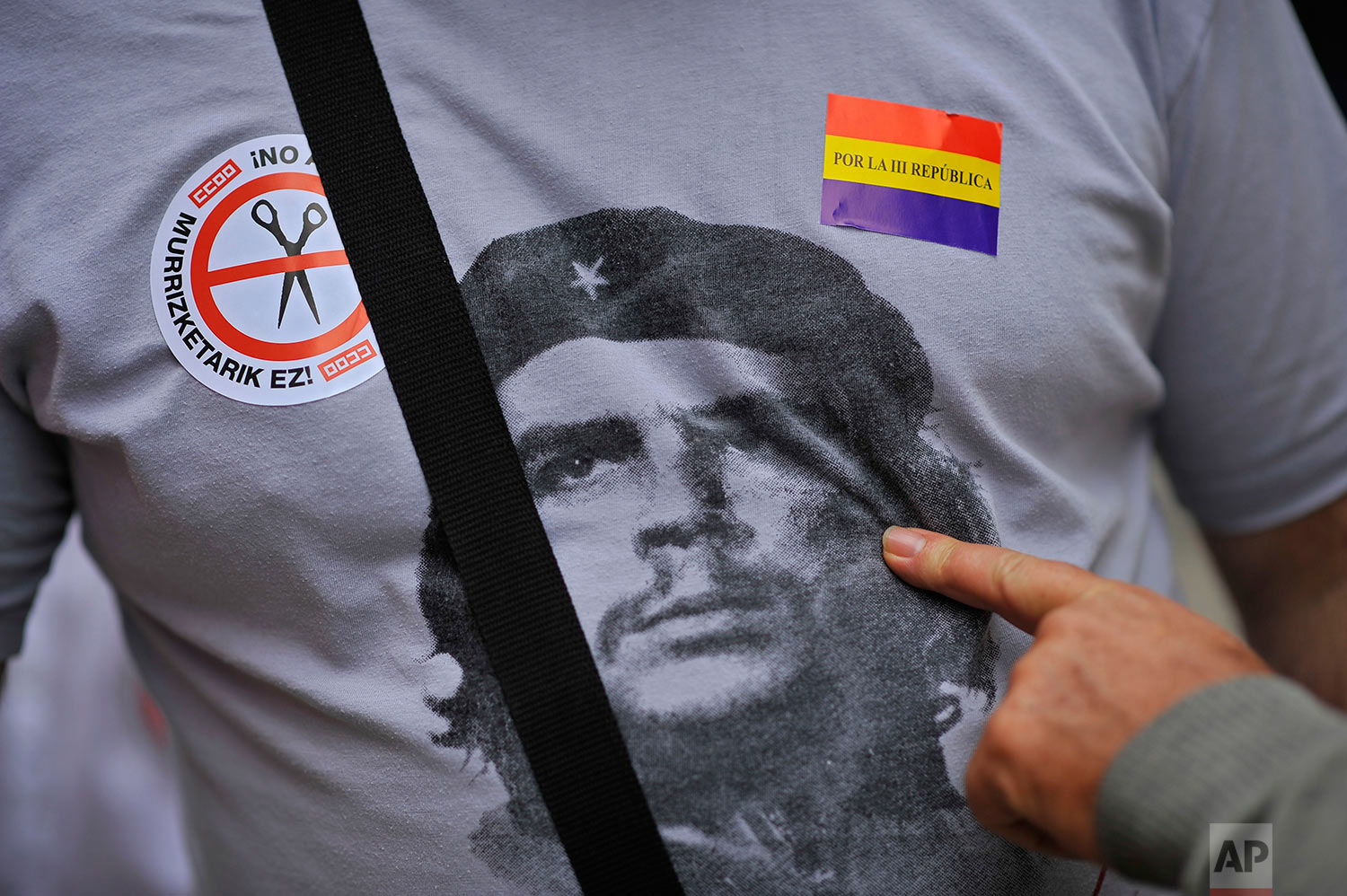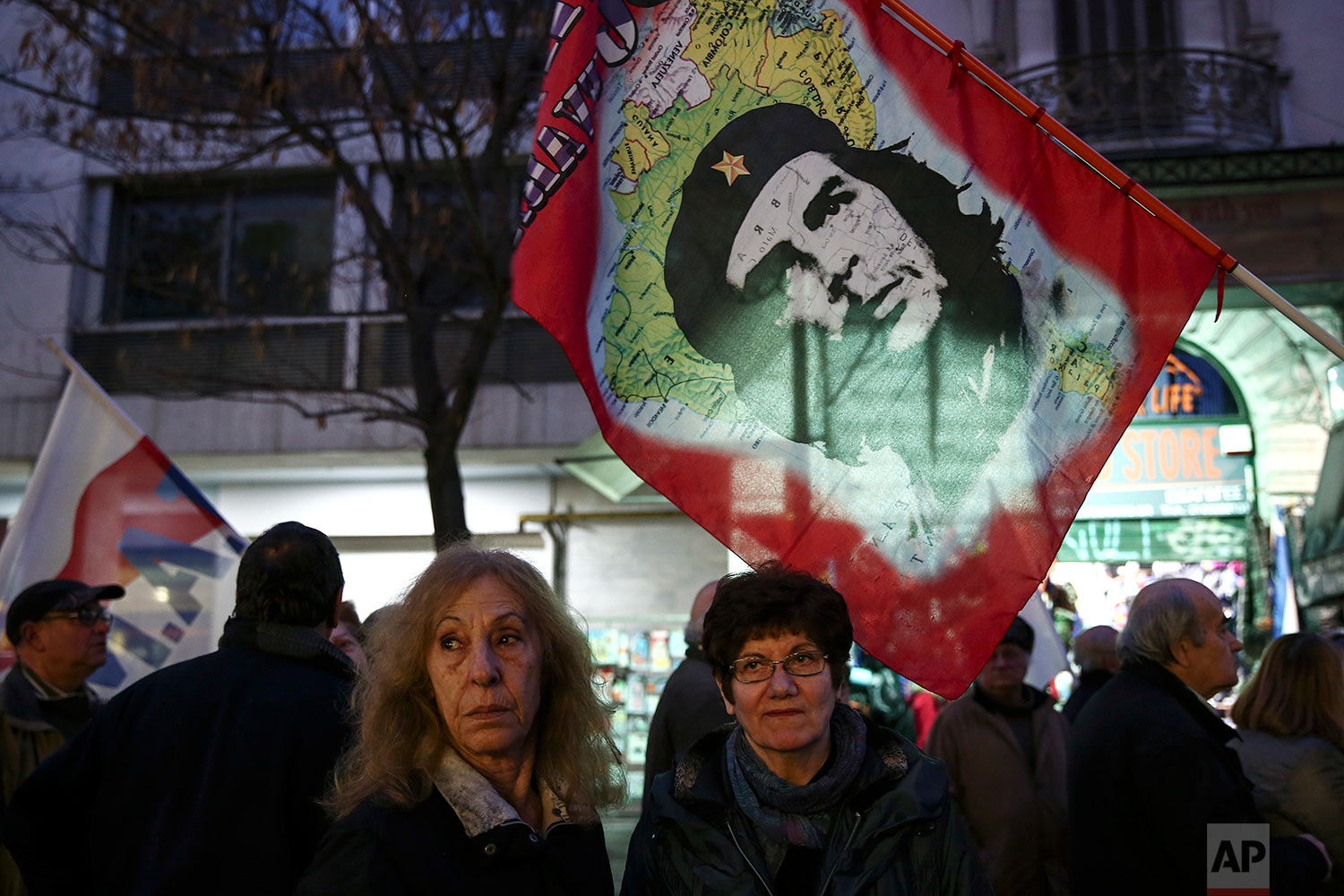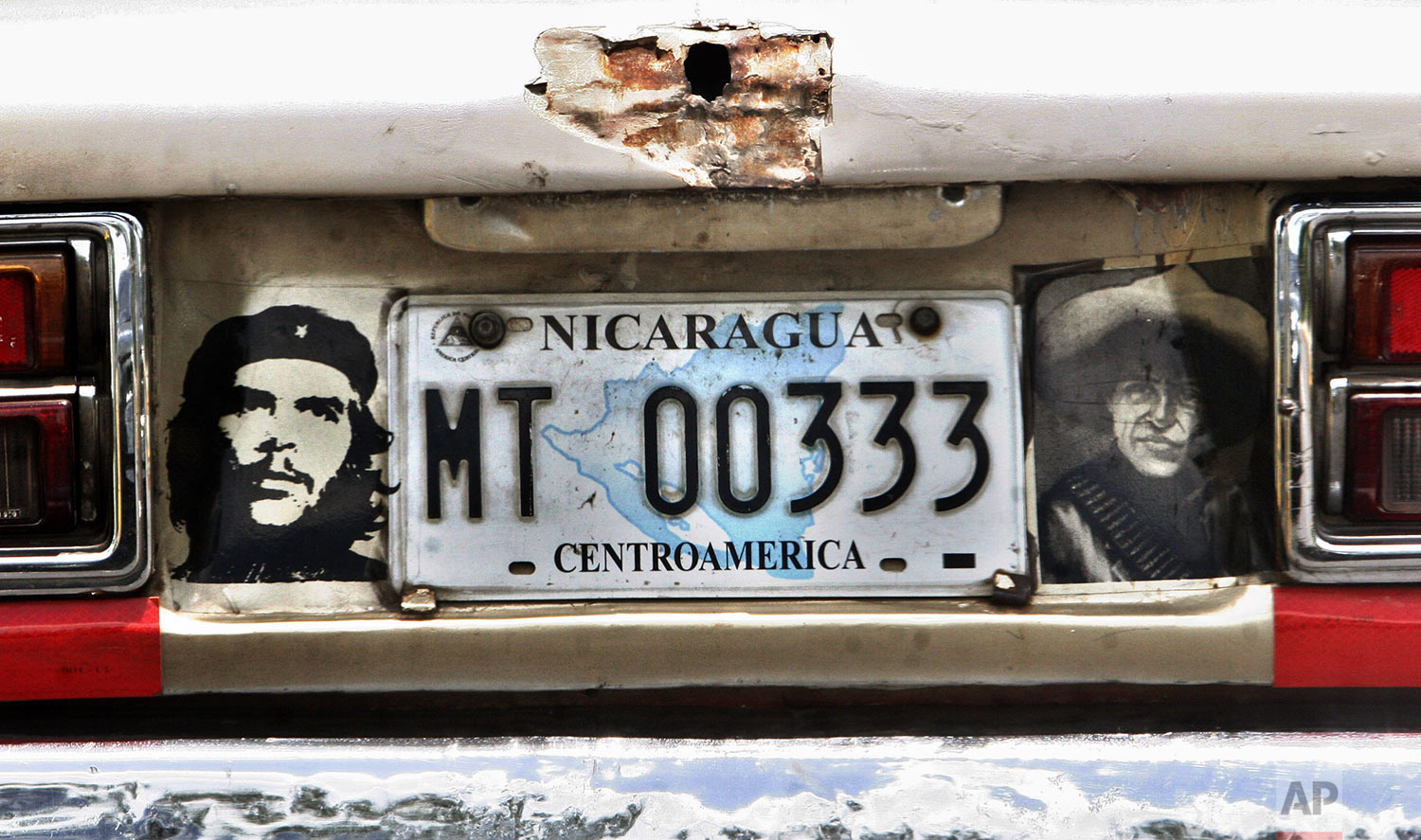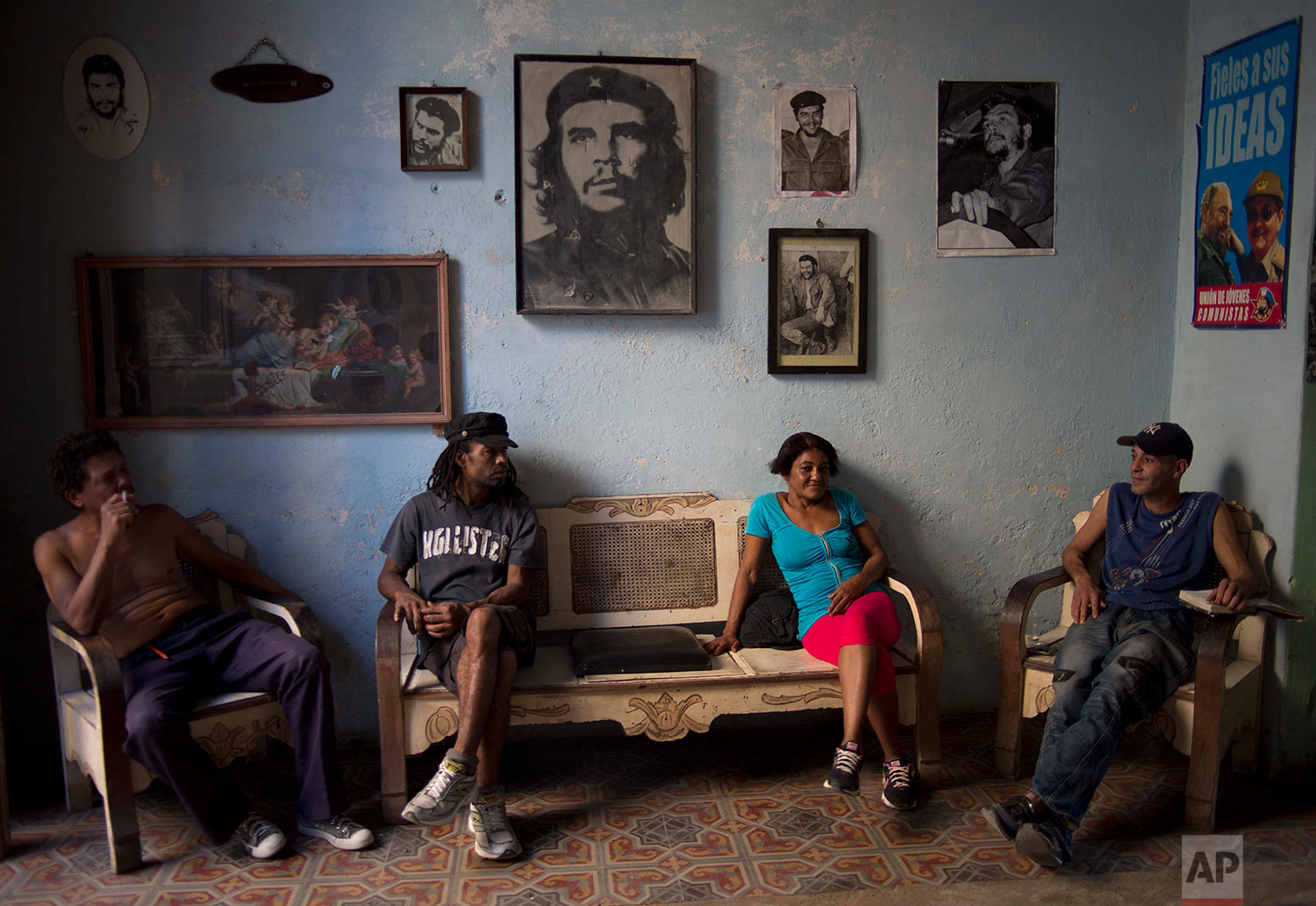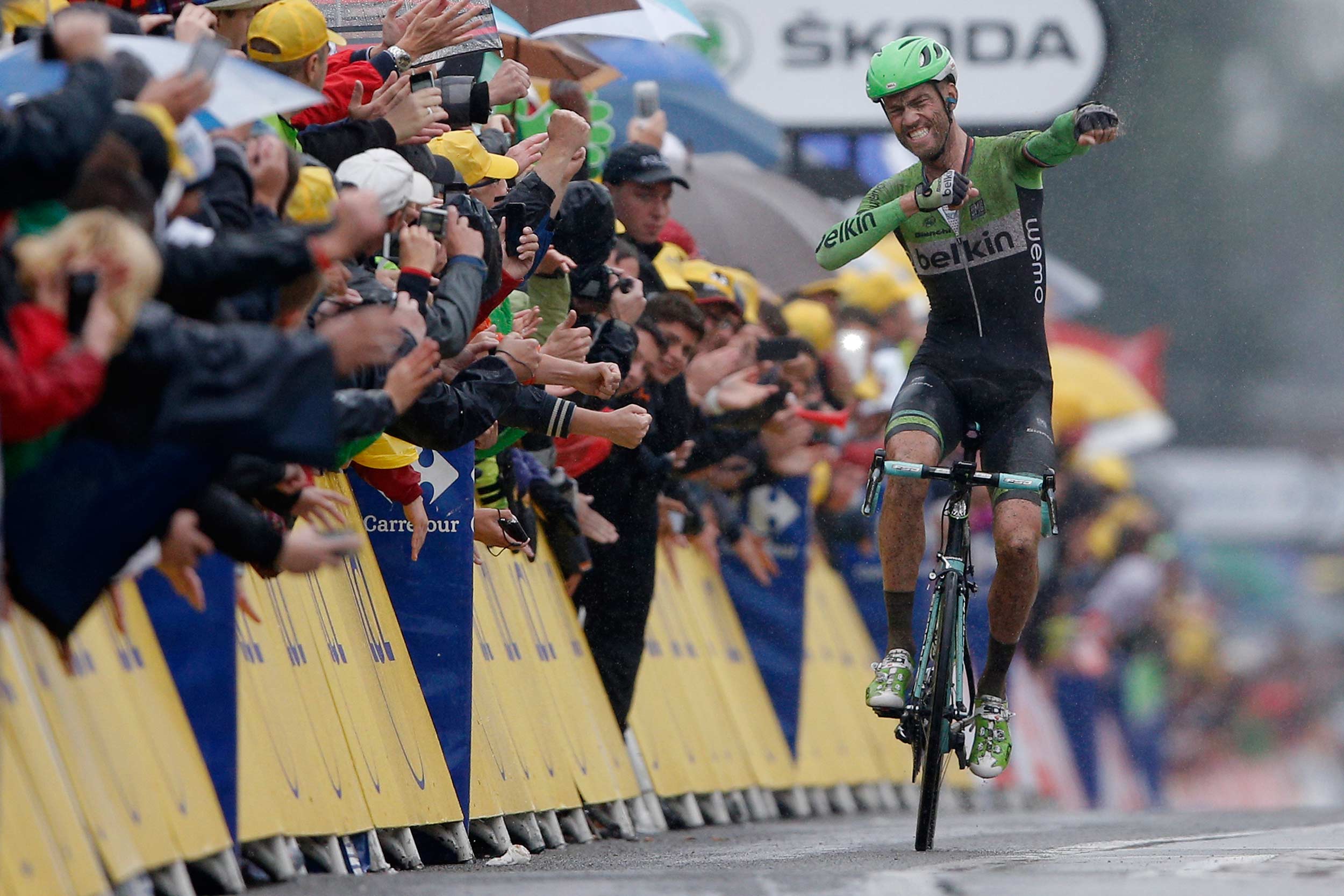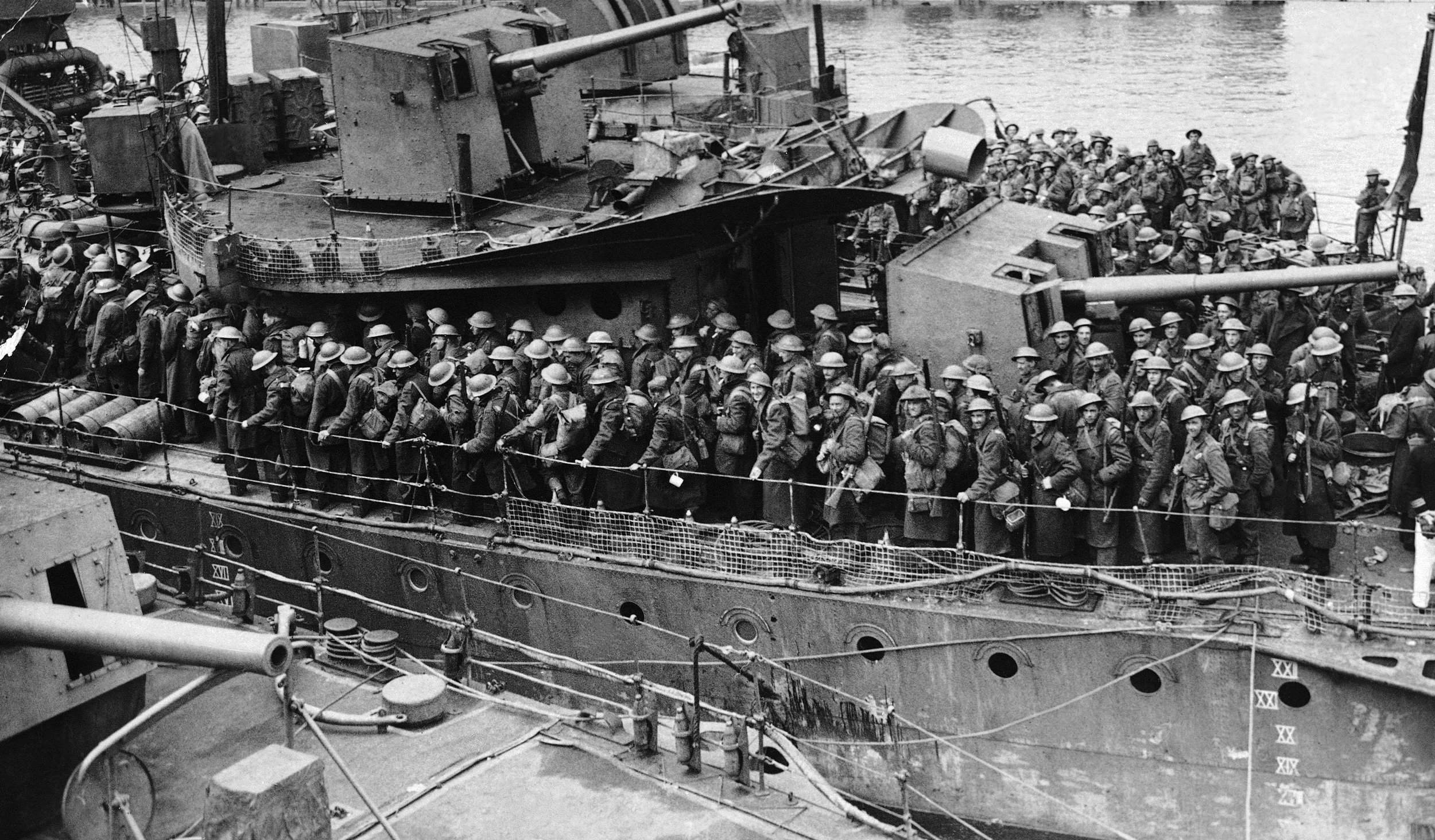Che Guevara’s face lives on, fifty years after death
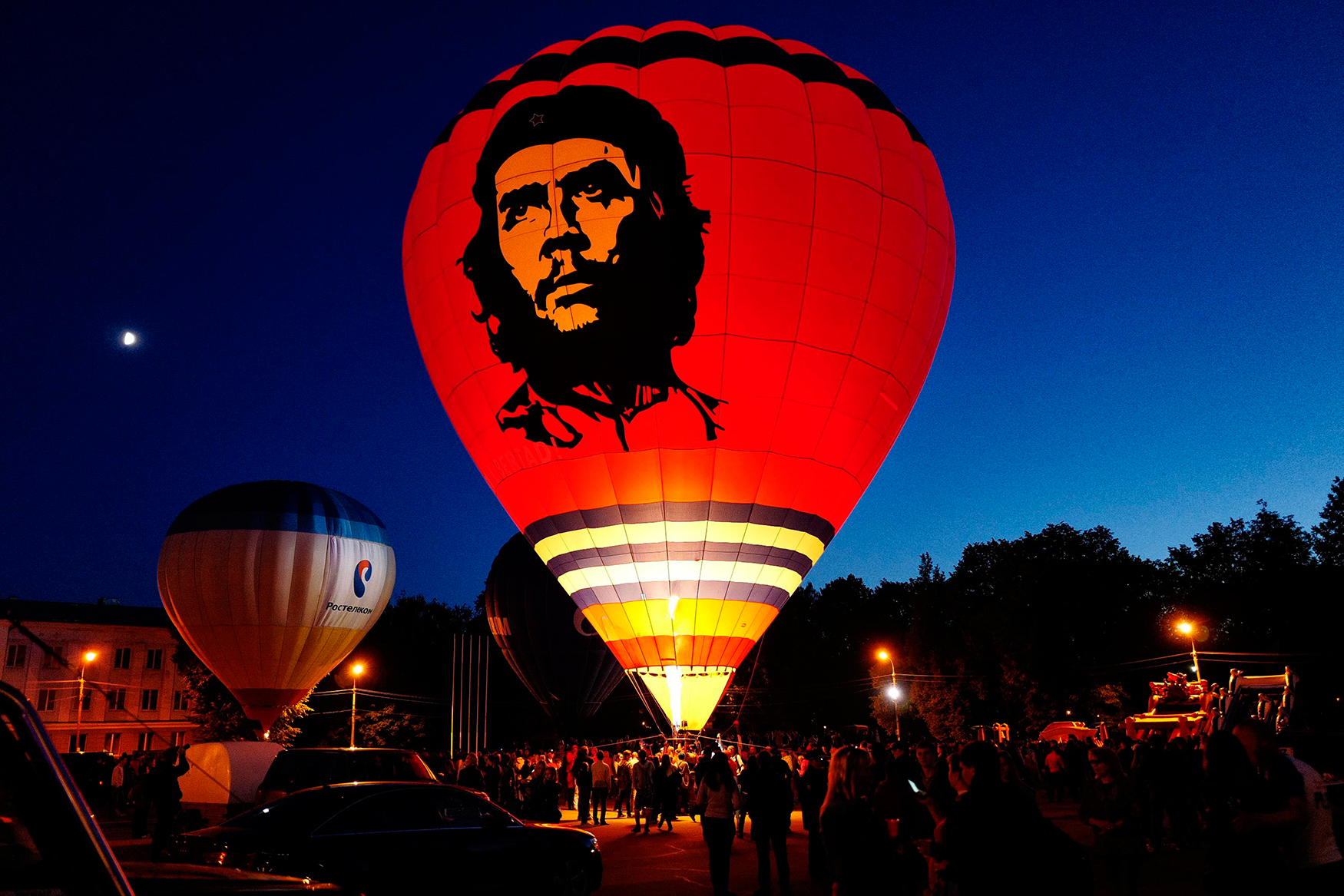
In the fifty years since his death, the image of Ernesto “Che” Guevara has become a ubiquitous symbol – almost as recognizable an icon as the logos for Coca-Cola or McDonald’s.
In this Dec. 13, 1964 photo, Cuba's Ernesto "Che" Guevara makes an appearance on "Face the Nation" at CBS-TV studios in New York. (AP Photo)
Che’s face can be found on t-shirts and tattoos, stamps and signs, on banners and on balloons. Guevara’s visage has become a symbol of both revolution and at the same time a symbol of commercialization by the very fact that you can buy so many products covered with his image.
Guevara, who was born in 1928, was killed after his capture on October 9, 1967 in Bolivia where he was leading a guerilla movement. He was shot by a sergeant in the Bolivian army. An Oct 10, 1967 Associated Press article reporting on his death, described Guevara this way:
“An Argentine who turned revolutionary after having received a medical degree, Mr. Guevara fought with Premier Castro in his revolution in the Sierra Maestra of Cuba. Afterward he played an active role in the Cuban Communist Government before he dropped out of sight.”
From Lebanon to Portugal, Haiti and Thailand, Turkey, Italy and South Africa, from an art gallery in Russia, on the bumper of a car in Nicaragua, and of course on many walls in Cuba itself, Che Guevara’s image seems omnipresent. From his death half a century ago, the image of a man who to many was seen as a martyr has become the face of the marketer.
Curation and text by Jonathan Elderfield
Visual artist and Journalist

